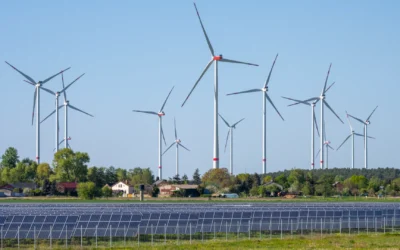• Owing to a range of factors, demand for switchgear has increased in the global switchgear market post-Covid, which has, in turn, increased the prices of switchgear as well.
• The power sector is one of the major drivers of the demand in the global switchgear market.
• OEMs of switchgear consider that the surge in demand for switchgear is not sustainable, which is why they are not even pushing for a second shift at the manufacturing facility, let alone adding another production line.
Owing to a range of factors, demand for switchgear has increased in the global switchgear market post-Covid, which has, in turn, increased the prices of switchgear as well. The surge in the price is a global phenomenon, whereas the shortage is more pronounced in the US as compared to Europe, as the US lacks a local supply chain. The switchgear OEMs are unable to meet the surge in the demand for switchgear, consequently increasing the lead time for switchgear drastically.
The major challenge now for the switchgear OEMs is whether they should increase the production capacity, considering the demand is sustainable. Even if they increase the production capacity, it is doubtful that the production will increase due to constraints that are discussed later in the article.
The article explores the demand drivers and other factors in the switchgear market, which in turn have led to the increase in the prices of switchgear and their lead time.
Demand Drivers of Switchgear
The power sector is one of the major drivers of the demand in the global switchgear market, as high-voltage and medium-voltage switchgear is extensively deployed in generation, transmission, and distribution sector. Recently, a marked shift has been observed in the global switchgear market, where renewable energy has emerged as a primary driver of the demand for MV switchgear. As per estimates of PTR, renewable energy will be driving the demand for MV switchgear in the future as countries push to integrate renewable energy with the grid. According to the International Energy Agency, a significant increase in renewable capacity additions accounting for 2,400 GW from 2022 to 2027 is expected globally.
Furthermore, electrification of the transport sector is also creating demand for switchgear. Grids all over the globe, especially in the economies that are pushing for the deployment of electric vehicle charging infrastructure, are upgrading the electricity grid, which in turn is creating demand for switchgear.
In North America, the demand for switchgear is largely driven by grid expansion plans and modernization in order to accommodate the increasing penetration of renewable energy and the deployment of EV charging infrastructure in the US. On the other hand, the European switchgear market will be primarily driven by the deployment of renewable energy in the region. The EU has set an ambitious target of increasing the share of renewable energy to 45% in the energy mix by 2030. In order to meet this target, the EU will have to install solar PV capacity of 600 GW and wind generation capacity of 510 GW. The renewable energy targets, along with the deployment of EV charging infrastructure in the region, have pushed utilities to upgrade the distribution networks, which in turn is driving the demand for switchgear.

Figure 1: Demand Drivers in the Global Switchgear Market.
Source: PTR Inc.
Factors Driving the Prices of Switchgear Up
PTR has observed an increase in the prices of switchgear due to several reasons. During the pandemic, lead times increased, which created a backlog, so post-Covid, when the economies are recovering, there is a pent-up demand for switchgear, which the suppliers are finding hard to meet. Furthermore, it is observed that demand from economies growing at a fast pace, including China and India, has increased. In the case of the US, incentives like the Inflation Reduction Act (IRA) and Infrastructure Investment and Jobs Act (IIJA) have also contributed to an increase in the demand for switchgear, in turn jacking the prices up.
On the other hand, the raw material supply is limited, especially copper, due to demand from other sectors, for instance, electric vehicles, charging infrastructure, and renewable generation. This has not only increased the prices of raw material itself but also jacked the prices of switchgear up as well.

Figure 2: Factors Driving the Prices of Switchgear Up.
Source: PTR Inc.
OEMs’ Perspective
Original Equipment Manufacturers of switchgear believe that the surge in demand for switchgear is not sustainable, which is why they are not even pushing for a second shift at the manufacturing facility, let alone adding another production line. On the other hand, even if the OEMs start more shifts, it will not lead to increased production due to raw material constraints.
Lead Times
The lead time of switchgear has gone up from weeks to years due to raw material shortages. Lead time also varies from region to region and depends on country policies as well. Also, if there exists a local supply chain, for instance, in the case of Europe, the lead time is less as opposed to the US, where the lead time is significantly high because the local supply chain of switchgear doesn’t exist.
Looking Ahead
It is significant to note that the surge in the prices for electrical switchgear is a global phenomenon, whereas shortages are more pronounced where local switchgear supply chain doesn’t exist, for instance, in the US. In the case of utilities, the major challenge is not the price of switchgear but the shortage and lead time as utilities pass the infrastructure cost to the consumer. So, in order to reduce the risk of shortages and increased lead time, especially in the power sector, countries need to push for establishing local switchgear supply chains.
Medium Voltage Switchgear Service Overview
The research presented in this article is from PTR's Medium Voltage Switchgear service. For information about this service please submit a request shown below.
Contact Sales:
Europe
+49-89-12250950
Americas
+1 408-604-0522
Japan
+81-80-7808-1378
GCC/Rest of APAC
+971-58-1602441
More about our:
Medium Voltage Market Research
Recent Insights
Driving the Future of Energy: Key Takeaways from ADIPEC 2024
Attending ADIPEC 2024 was an insightful experience. The event offered a collaborative environment for meaningful discussions on the energy...
Exploring the European EVCI Services Market Key Players and Emerging Trends
There has been a significant surge in the development of EVCI due to the widespread adoption of EVs in Europe. By 2030, it is expected that Europe...
Driving the Future of Energy: Key Takeaways from ADIPEC 2024
Attending ADIPEC 2024 was an insightful experience. The event offered a collaborative environment for meaningful discussions on the energy...


